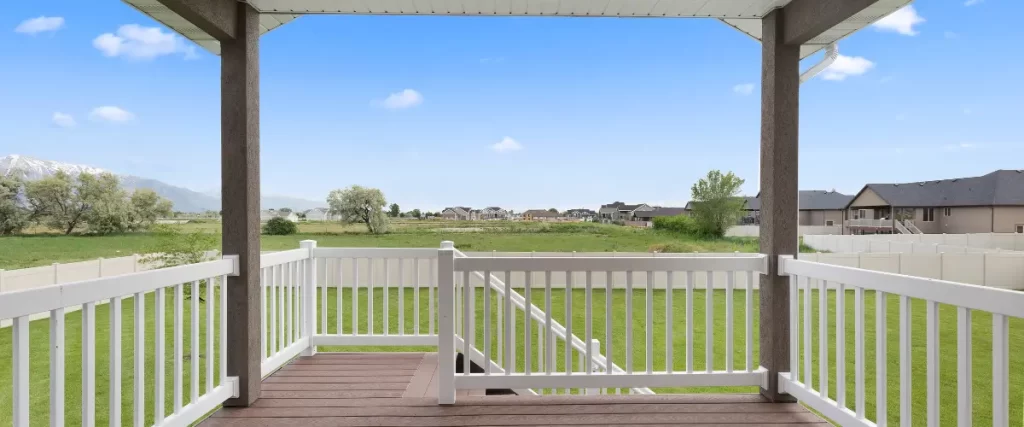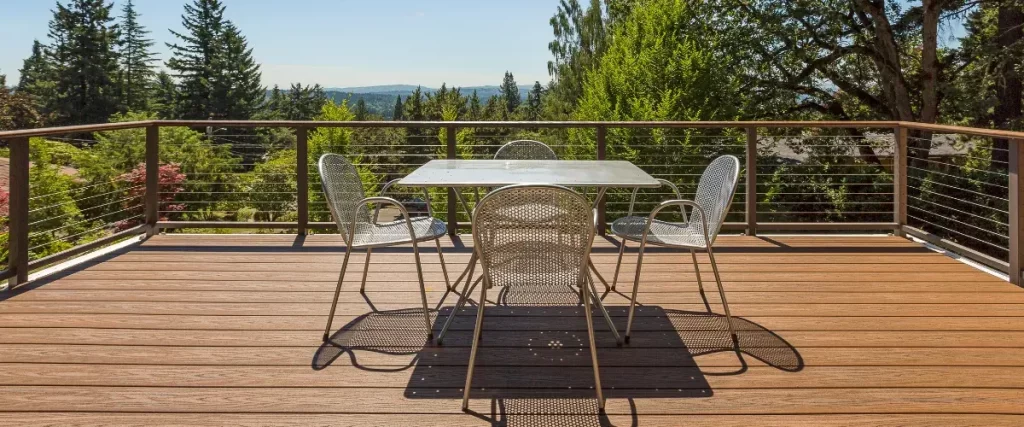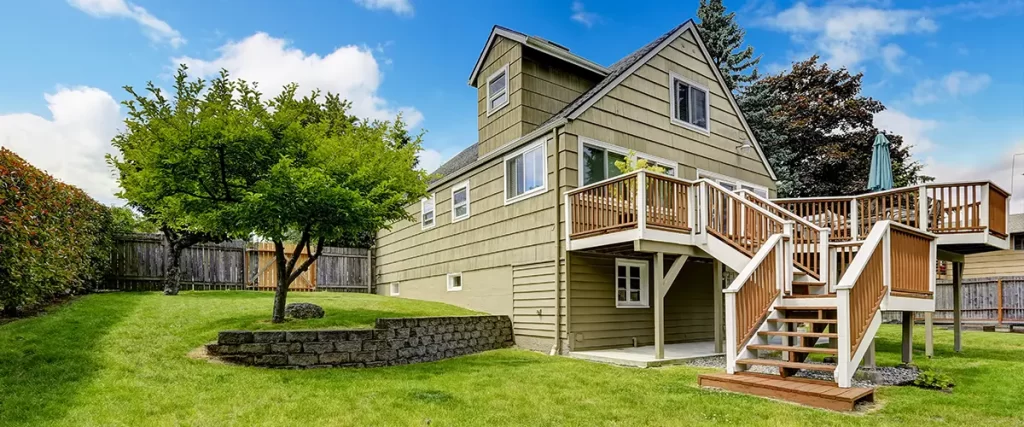Thinking about adding a deck to your historic Knoxville home? You’re not alone. Whether you’re in 4th & Gill, Old North Knoxville, or another historic district, deck additions are a hot topic—and for good reason. Knoxville’s historic neighborhoods are full of charm and character, but that character comes with a rulebook.
If you live in one of these preservation-rich areas, you’ve probably run into this question: Can I even add a deck to my house? The answer is… it depends. But don’t worry. We’re going to walk you through everything you need to know—from local guidelines to design tips that will get you to “yes” without compromising your home’s historical integrity.
Let’s dig in.

Why Adding a Deck in Knoxville’s Historic Zones Is Complicated (But Totally Worth It)
Living in a historic neighborhood like 4th & Gill or Old North is a dream for many Knoxville homeowners. The architecture. The tree-lined streets. The walkability. It all adds up to a sense of community that’s hard to replicate anywhere else.
But here’s the flip side: You can’t just start hammering away on a new deck the same way you could in a newer neighborhood out in Farragut or Hardin Valley.
Historic zoning overlays are in place specifically to protect the visual and structural character of these neighborhoods. That means any exterior addition—especially one like a deck—has to meet the guidelines set by the Knoxville Historic Zoning Commission (HZC).
Here’s the kicker: If you go ahead and build without the right approvals, you could face fines—or worse, be required to remove the deck altogether.
That said, it’s 100% possible to add a deck that not only complies with regulations but also enhances your property’s value and livability.
Understanding Historic Zoning in Knoxville
Before we talk design or materials, let’s get clear on what these zoning rules actually are.
What Is a Historic Overlay Zone?
Knoxville has designated historic overlay districts to preserve the character of historically significant neighborhoods. In areas like 4th & Gill, Old North, Edgewood-Park City, and Mechanicsville, these overlays add another layer of regulation on top of standard building codes.
Each proposed change to a property’s exterior is reviewed by the Historic Zoning Commission. That includes:
- Decks
- Porches
- Fences
- Siding
- Roofing materials
The idea isn’t to prevent upgrades—it’s to make sure any changes “fit” the historic context of the surrounding homes.
Key Guidelines for Deck Additions
Here’s what the Historic Zoning Commission generally looks for when evaluating deck proposals:
- Location: Rear-facing decks are almost always easier to get approved than those visible from the street.
- Scale: The deck should be appropriately sized in relation to the house. Oversized additions are a red flag.
- Materials: Use materials that complement the existing structure—think wood over vinyl.
- Design: Simple, unobtrusive designs are favored. Decorative railings or elements should match the period style.
You’ll find more detailed guidelines in the City of Knoxville’s Design Guidelines for Historic Districts.

The Approval Process: Step-by-Step
So what does the process actually look like if you want to add a deck to your historic home?
- Consult the Design Guidelines – Get familiar with what’s allowed in your specific neighborhood. Each district may have slightly different criteria.
- Meet with the Historic Zoning Commission Staff – Before submitting an application, you can schedule a pre-application meeting. This is where you get early feedback and avoid major missteps.
- Submit a Certificate of Appropriateness (COA) Application – This includes architectural drawings, materials info, photos, and a site plan.
- Attend a Public Hearing (If Required) – Depending on the scope of your project, your proposal may be reviewed during a public meeting.
- Receive Approval – or Recommendations for Revisions – If approved, you’re good to go. If not, you’ll get notes on what needs to change.
Design Tips to Stay Compliant AND Stylish
Adding a deck doesn’t mean you have to sacrifice style for rules. In fact, the right design can elevate both the look and function of your home.
Here are a few design tips to keep your deck compliant and gorgeous:
- Stick to Traditional Shapes: Rectangular or square decks blend better with historic homes.
- Use Painted Wood or Natural Stains: Avoid composite materials unless they closely mimic real wood.
- Keep It Low-Key: A lower profile makes the addition less visually dominant.
- Incorporate Period-Appropriate Details: Simple railings or balusters that match the home’s era help your case with the zoning board.
Local Climate Considerations: Decking That Works in Knoxville
Knoxville gets its fair share of rain, humidity, and fluctuating temperatures. That means your deck needs to do more than look pretty—it needs to hold up.
Here are a few materials that do well in our climate:
- Pressure-Treated Wood: Affordable and durable with the right maintenance.
- Cedar: Naturally rot-resistant and historically appropriate.
- Composite (Only if Approved): Some modern composites now mimic wood well enough to pass in rear-yard settings.
Whatever you choose, regular sealing or staining is a must to combat Knoxville’s moisture-heavy air.
Best Decking Material Manufacturers for Historic Projects
If you’re sourcing decking materials, go with brands that offer quality, durability, and aesthetic options that won’t trigger a red flag from the Historic Zoning Commission.
Top Decking Manufacturers
- TimberTech – Offers composite decking with wood-like finishes ideal for discreet rear additions.
- Trex – Known for long-lasting composite decking that requires minimal upkeep.
- YellaWood – Pressure-treated lumber that resists rot and insects; a great choice for traditional builds.
- Western Red Cedar Lumber Association – Supplies high-quality cedar perfect for period-appropriate construction.
- Fiberon – Another solid composite brand with options designed to mimic historical wood aesthetics.
FAQ: Common Questions About Decks in Knoxville Historic Districts
Can I build a front porch or deck in a historic zone?
Rarely. Front-facing decks or porches are heavily scrutinized. Rear decks are more likely to be approved.
How long does the approval process take?
Expect 30–60 days from application to final approval, depending on complexity and timing.
What if my house isn’t contributing but is in the historic district?
Non-contributing structures still need to follow certain guidelines, though sometimes they get more flexibility.
Do I need a contractor to submit the COA?
No. Homeowners can submit, but hiring someone who knows the ropes can speed up the process.
Can I use composite decking in a historic zone?
Sometimes, but only if it’s not visible from the street and mimics real wood well.

Final Thoughts: Yes, You Can Add a Deck—If You Do It Right
Adding a deck to your historic home in Knoxville is absolutely doable. But it’s not a weekend project you can start on a whim. You need a plan, a vision that respects the history around you, and a clear path through the approval process.
By following the guidelines, working with the Historic Zoning Commission early, and using materials and designs that honor your home’s character, you’ll be able to enjoy your new deck and keep the neighborhood charm intact.
Ready to start your project
If you’ve got questions about designing or planning a historic deck addition, contact us at (865) 801-4545. We’re happy to talk you through your next steps and help you make your dream deck a reality—without the headaches.

